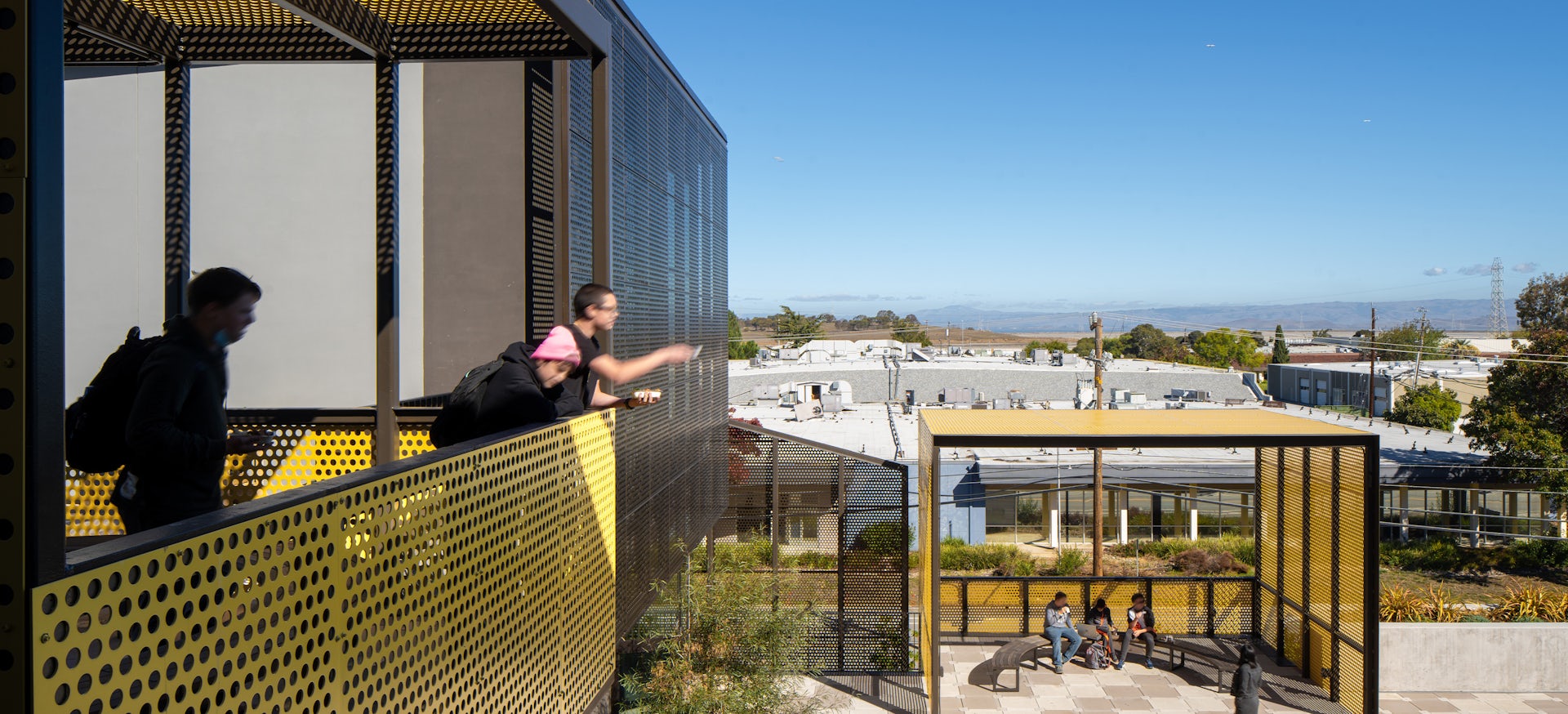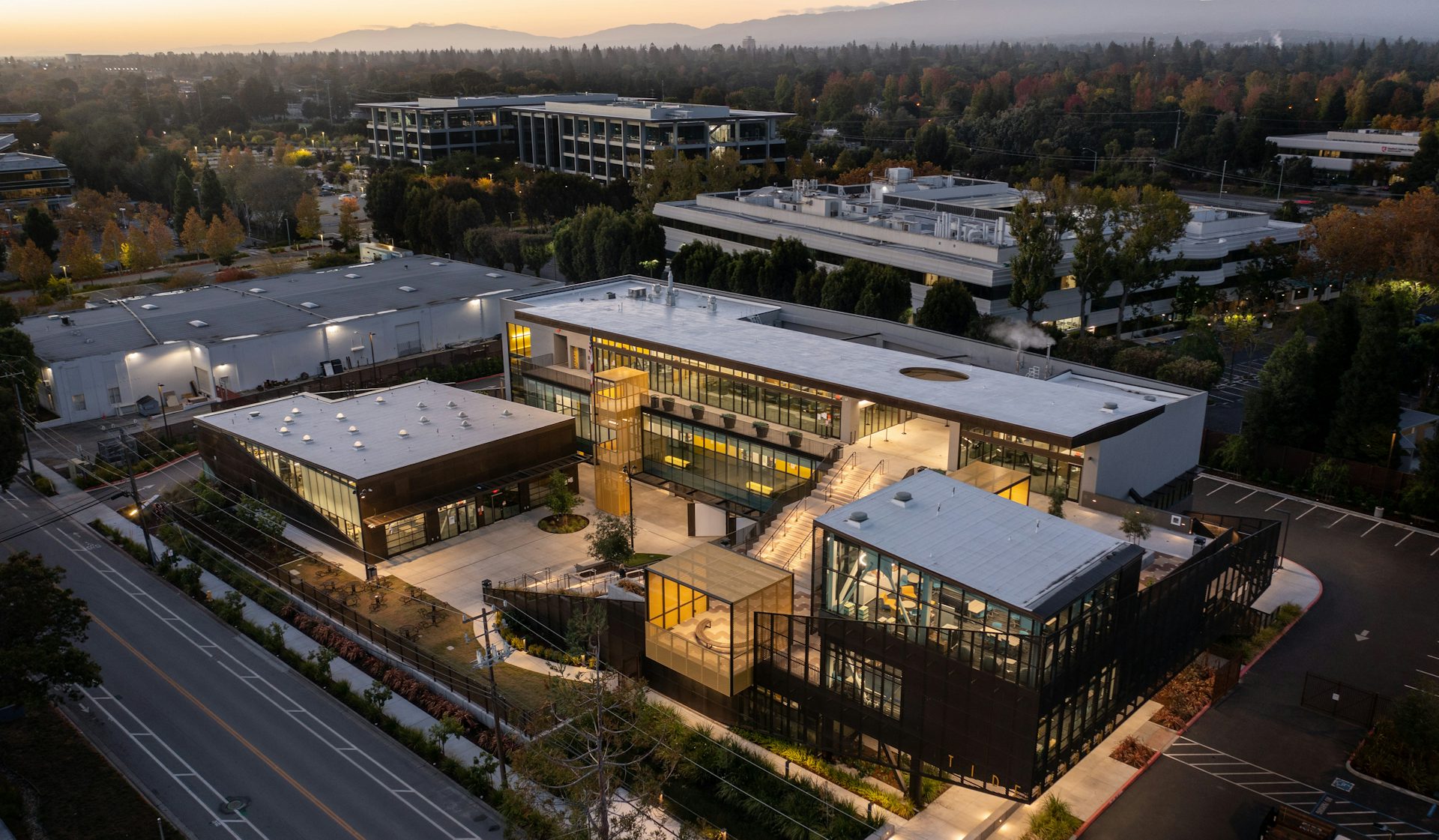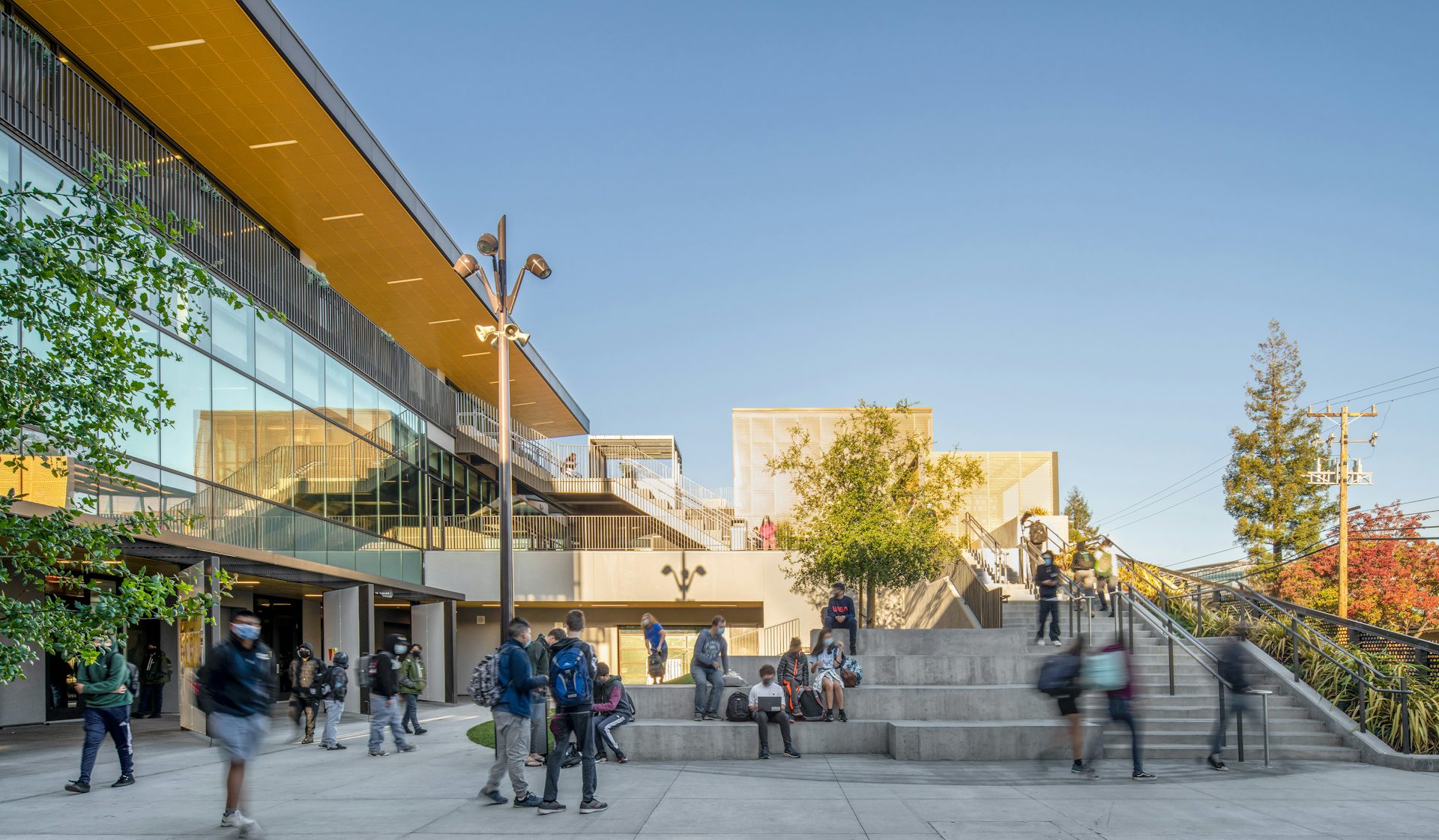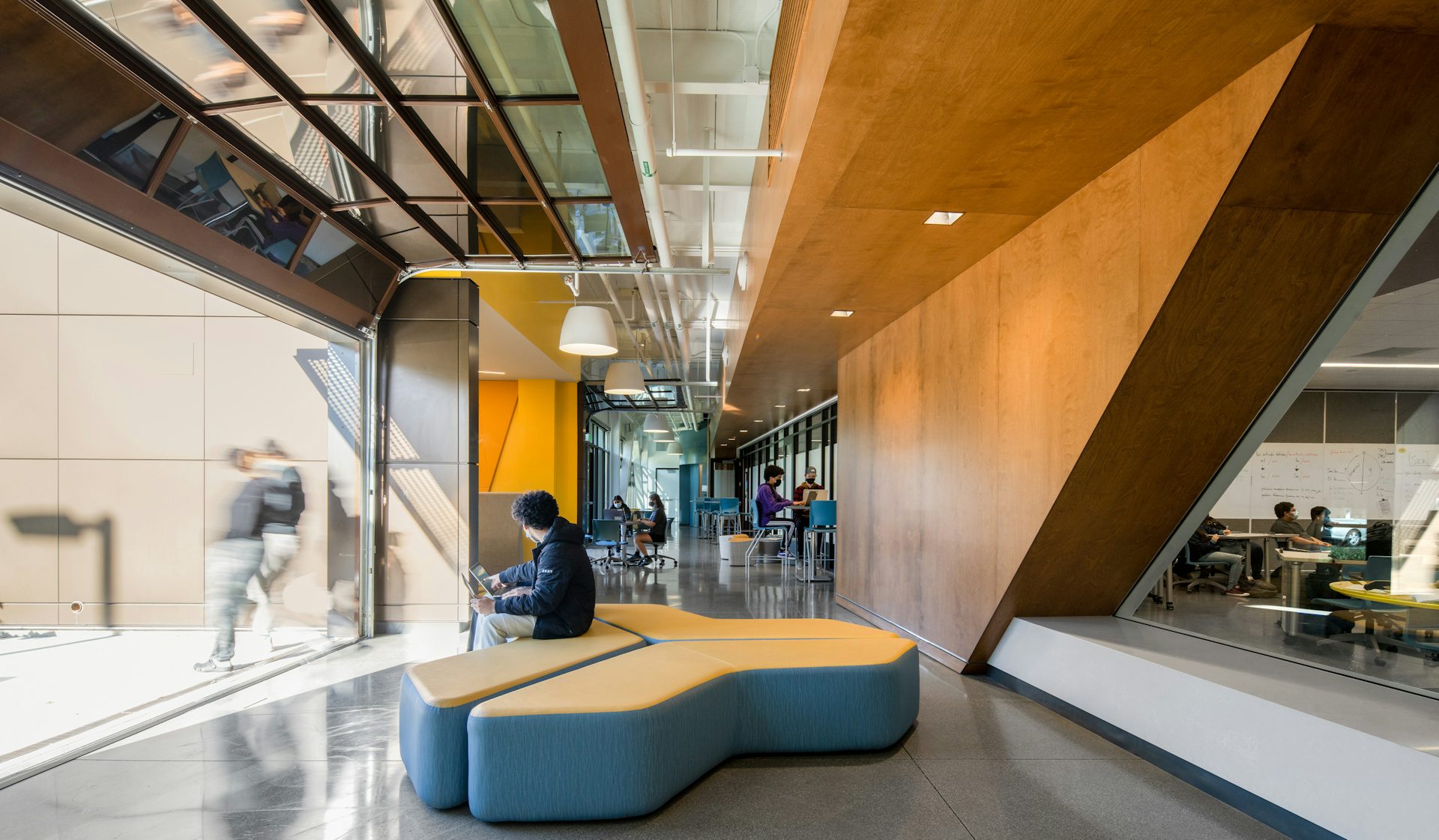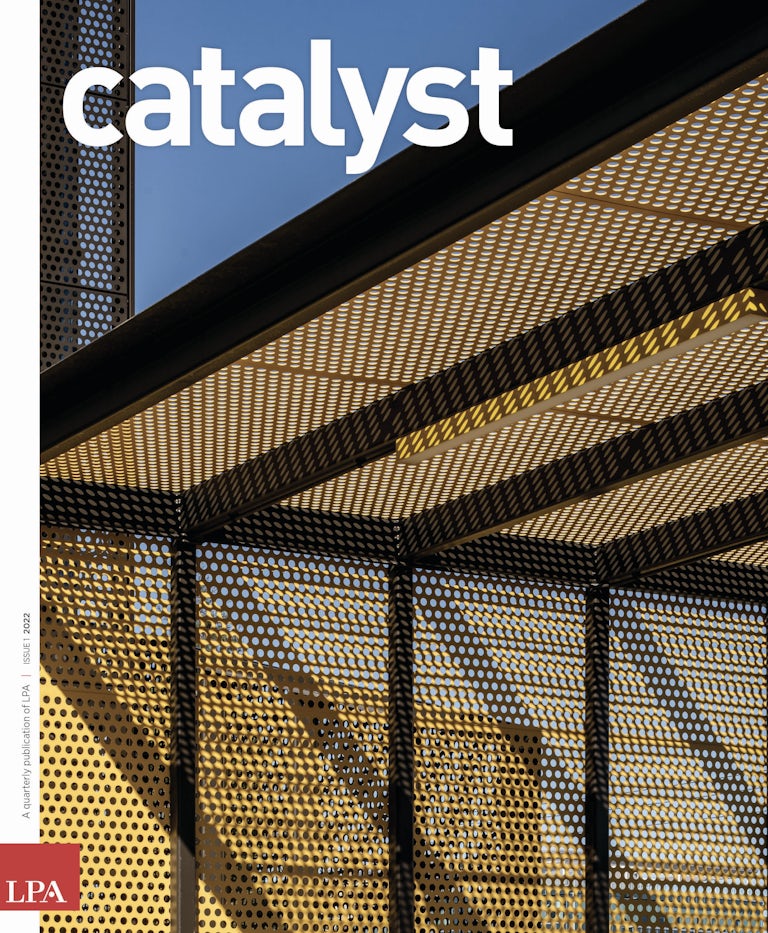A STEAM-based high school on two acres in an evolving industrial zone blends indoor and outdoor learning environments in a three-story campus focused on new ways of teaching technology, design and engineering.
Located in the heart of Silicon Valley, TIDE Academy is designed to reflect the entrepreneurial spirit and innovation found in the companies headquartered in the surrounding neighborhoods.
Part of the Sequoia Union High School District, TIDE is a STEAM (science, technology, engineering, arts and mathematics)-focused public high school, with a mission to support career pathways and foster connections with local institutions. From the start, the design process brought together discussions of curriculum, facility and industry, merging the educational and community goals.
“It wasn’t just about building a facility for ‘x’ number of students, but about the way the space would support the programming and the way that they were going to teach,” LPA Director of K-12 Kate Mraw says.
TIDE — the acronym stands for technology, innovation, design and engineering — was designed for 400 students on a two-acre site in an industrial area of Menlo Park that is rapidly changing to offices for technology companies and residential, about a block from the Meta (Facebook) headquarters. “Given the size of the site, we knew the design would have to be compact, and we would have to go vertical to get the programming in,” says LPA Design Director Helen Pierce, who has worked on several K-12 campuses in the Bay Area.
The campus forms a protective three-story “U” around a terraced central courtyard. Instead of having a typical setback, the campus connects to the sidewalk and street, putting education on display and tying the school to the neighborhood. No space on the site is wasted. Athletics and other extracurricular programs use community facilities. There is no student parking for cars, but there is extra parking for bikes; students are encouraged to walk or bike to school or to use public transportation.
“It wasn’t just about building a facility for ‘x’ number of students, but about the way the space would support the programming and the way that they were going to teach,” LPA Director of K-12 Kate Mraw says.
The building design shakes up the standard concepts of school organization. Administration spaces are integrated into the first two floors to maximize lab space and better connect educators and students. The student union, kitchen and a small performing arts space are on the top floor, which serves as community space for students and teachers, with broad views of San Francisco Bay and mountains. Grades are separated by floors; the 9th and 10th grades are on the first floor; 11th and 12th are on the second floor.
Learning environments were designed to support project-based learning, team teaching and the interdisciplinary instruction necessary to support STEAM curriculums. TIDE educators wanted spaces that would encourage student choices, critical thinking and inquiry-based learning. With space limited, LPA designers worked with educators to develop a learner profile for the school and explore how they planned to teach science, math and the arts.
As a result, classrooms and labs were enlarged from the standard model to 1,150 square feet, each with direct access to a colab and outdoor space. “Think tanks” and huddle spaces are associated with every learning studio. Operable walls, writing surfaces and a variety of collaboration spaces offer students choices for where and how to work. Spaces are designed to facilitate three different types of learning: collaboration, contemplation and concentration.
“Instead of saying classroom, storage, workroom, we broke it up and said brainstorming room, huddle area, collaboration space, seminar space,” Mraw says. “We took the square footage and worked with it differently.”
Each floor includes a “learning studio” with classroom and colab space, which can be reconfigured based on the needs of a project. Designated labs focus on science, coding, design, arts and physics. Technology, tools and storage areas in each space can be reconfigured to support different levels of work. Furniture design guidelines were developed to maintain the goals of each space. The project-based learning spaces are able to adapt depending on where students are in the design thinking stage.
“TIDE Academy's design supports our focus on career technical education pathways focusing on STEAM fields,” Principal Simone Rick-Kennel says. “The innovation lab encourages ideation and creation for cross-curricular projects.”
On every level, learning spaces spill into outdoor learning environments through garage-style rollup doors. The outdoor and indoor spaces are designed to intertwine and work together. Spaces can be used for brainstorming or experiments specific to the discipline, encouraging different groups to connect and work together on projects.
Most circulation on the terraced campus is exterior, promoting healthy activity, connections to outdoor activity and student engagement. A grand staircase connects different levels. Shaded decks provide space to collaborate and socialize.
“From the beginning of the process, we knew we wanted to make it an active design,” says LPA Director of Landscape Architecture Kari Kikuta. “We asked: ‘How could we infuse physical activity into their curriculum on campus when they don't have a traditional high school setup?’”
Environmental sensitivity and sustainability are built into every aspect of the campus. All of the regularly occupied spaces on campus have access to daylight and views. A mesh scrim surrounds large sections of glass, filtering direct sunlight. Energy use was reduced by 67 percent from the industry baseline. To provide resilience against flooding, electrical and mechanical systems were raised three feet from ground level. One hundred percent of stormwater is treated on-site.
The sustainability elements and academic goals come together on the campus, which provides spaces to socialize, perform, debate and play. The design promotes familiarity between faculty and students. “All parts of the school are visible from any part of the school, which I think makes for a really intimate campus,” Pierce says. “It supports community, it supports behavior, and it supports hard work.”
Principal Rick-Kennel was asked to name her favorite parts of the school. “The collaboration spaces in Low and High Tide, classrooms and the college style cafeteria, research lounge and game room invite students to be in beautiful spaces,” she said. “We are truly fortunate to have a state-of-the-art designed high school.”


